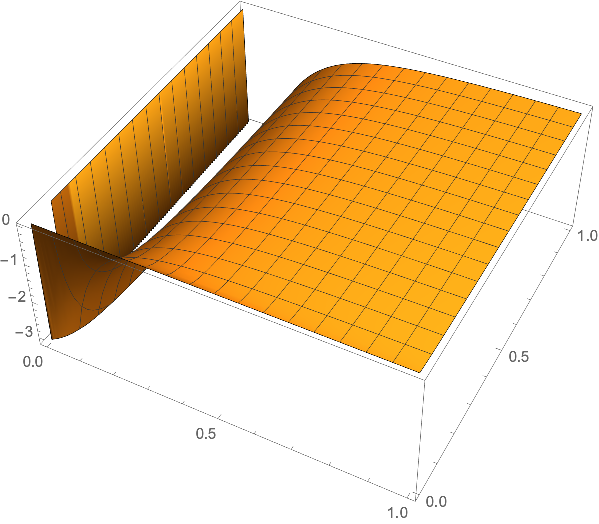Clear["Global`*"]
expr1 = ((1 - (a*x))^12)*((1 + (a/b))/((1 + (a*x/b))^2)) // Simplify;
Evaluating the integral
int = Assuming[0 < a <= 1 && 0 < b <= 1,
Integrate[expr1, {x, 0, 1}] // Simplify];
Taking the derivative
expr2 = D[int, a] // Simplify[#, 0 < a <= 1 && 0 < b <= 1] &;
Numerically finding the minimum
NMinimize[{expr2, 0 < a <= 1, 0 < b <= 1}, {a, b}]
,
(* WorkingPrecision -> 20] // N
{-6.00238, {a -> 18.71426*10^10042*10^-79, b -> 0.061863191264}}
Limit[expr2, a -> 0]
(* -6 *)
The minimum occurs when a is near 0
Limit[expr2, a -> 0]
(* -6 *)
EDIT: numerically finding the maximum
NMaximize[{expr2, 0 < a <= 1, 0 < b <= 1}, {a, b},
WorkingPrecision -> 20] // N
(* {-1.00973*10^-12, {a -> 0.981099, b -> 9.7192*10^-13}} *)
The maximum occurs for b near 0
Limit[expr2, b -> 0]
(* 0 *)
Consequently, expr2 is nonpositive everywhere in the region. Graphically,
Plot3D[expr2, {a, 0, 1}, {b, 0, 1},
PlotPoints -> 50,
Exclusions -> True,
WorkingPrecision -> 15,
ClippingStyle -> None]

